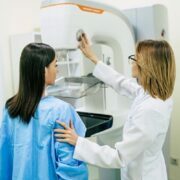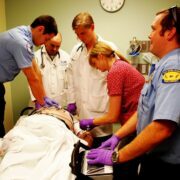The healthcare profession that diagnoses, treats, assesses, and works to prevent disability and disease through physical means is called physiotherapy.
Experts in movement and function who assist and work with their patients to overcome movement disorders are called physiotherapists.
The movement disorders may be since birth, acquired through injury or accident, or are results of ageing.
What are the different physiotherapy approaches and techniques?
There are three key approaches used in physiotherapy.
These three main approaches are:
- Education and Advice
One of the key characteristics of physiotherapy involves treating the body as a whole as opposed to just focusing on the individual aspects of an injury.
Therefore, providing general advice to enhance the patient’s overall well-being (i.e. maintaining a healthy weight, eating right, and exercising regularly, etc.) is considered a crucial part of the treatment process.
Physiotherapists also give patients specific advices to help reduce the risk of injury and pain.
For instance, individuals with back pain are given advice on the proper carrying or lifting techniques, good posture, prolonged standing, and overstretching, among others.
- Movement and Exercise
When needed, physiotherapists can recommend exercises and movements that can help improve the patient’s function and mobility.
- Activities that involve moving the entire body (swimming, walking, etc.) – helpful for patients recovering from an injury or operation that affects the mobility.
- Exercises that are designed to improve strength and movement of a specific body part – requires regular repetition for a specific time length.
- Exercises done in warm and shallow water (aquatic therapy or hydrotherapy) – designed to provide relaxation and support to muscles and joints.
- Manual Therapy
The technique where a physiotherapist utilizes their hands to mobilize, manipulate, and massage the patient’s body tissues is called manual therapy.
The technique can help:
- Relieve stiffness and pain
- Enhance body movement
- Promote relaxation
- Improve blood circulation
Other Techniques Used in Physiotherapy
Other techniques physiotherapists use to promote healing and ease pain includes:
Acupuncture – this technique makes use of fine needles that are inserted into specific body points. The goal is to hasten recovery and alleviate pain.
Transcutaneous electrical nerve stimulation (TENS) – to relieve pain, a small (and battery-operated) device is used to deliver an electric current to the area affected.
When is physiotherapy beneficial?
Physiotherapy addresses neurological, cardiopulmonary, orthopedic and cardiac problems among children, adults, infants, and the geriatric population.
Orthopedic disorders treated using physiotherapy includes fractures, joint disorders, sports injuries, neck and back pain, post-operative conditions, amputation, and arthritis.
Intervention for orthopedic disorders involves therapeutic exercises to enhance range of motion, endurance, and joint mobilization. The goals include relieving pain and reducing stiffness.
Also, in most cases, orthopedic patients are also trained in the utilization of ambulation devices to help enhance and restore movement.
Neurological disorders such as multiple sclerosis, cerebral palsy, spinal cord injuries, and Parkinson’s disease make up a huge percentage of a physiotherapist’s caseload.
Physiotherapy can also help patients with abnormal body tone, hemiparesis (weakness on one side of the body), and hemiplegia (paralysis on one side of the body).
Interventions for neurological disorders focus on restoration and improvement of gait, muscle reeducation, and training in the use of mobility aids.
For children with cerebral palsy, physiotherapy is also considered beneficial as it helps minimize deformity and spasticity, enhance postural control, and help train the child in the use of assistive devices.
Cardiopulmonary conditions can also benefit from physiotherapy. Patients with decreased endurance, shortness of breath, and those who experience difficulty in carrying out their day-to-day activities can significantly improve the quality of their lives through physiotherapy.
Intervention includes risk factors counseling, behavior modification, and patient education.
Physiotherapy has also been proven helpful for patients who have had cardiac surgery as it helps prevent the loss of both function and strength.
Understandably, a lot of patients (especially the elderly) become fearful right after the surgery.
Fortunately, physiotherapy can provide them with the right training when walking, getting out of bed, performing their daily routines, etc.
This training is very important as it can help patients regain their confidence and help them recover faster.














Comments